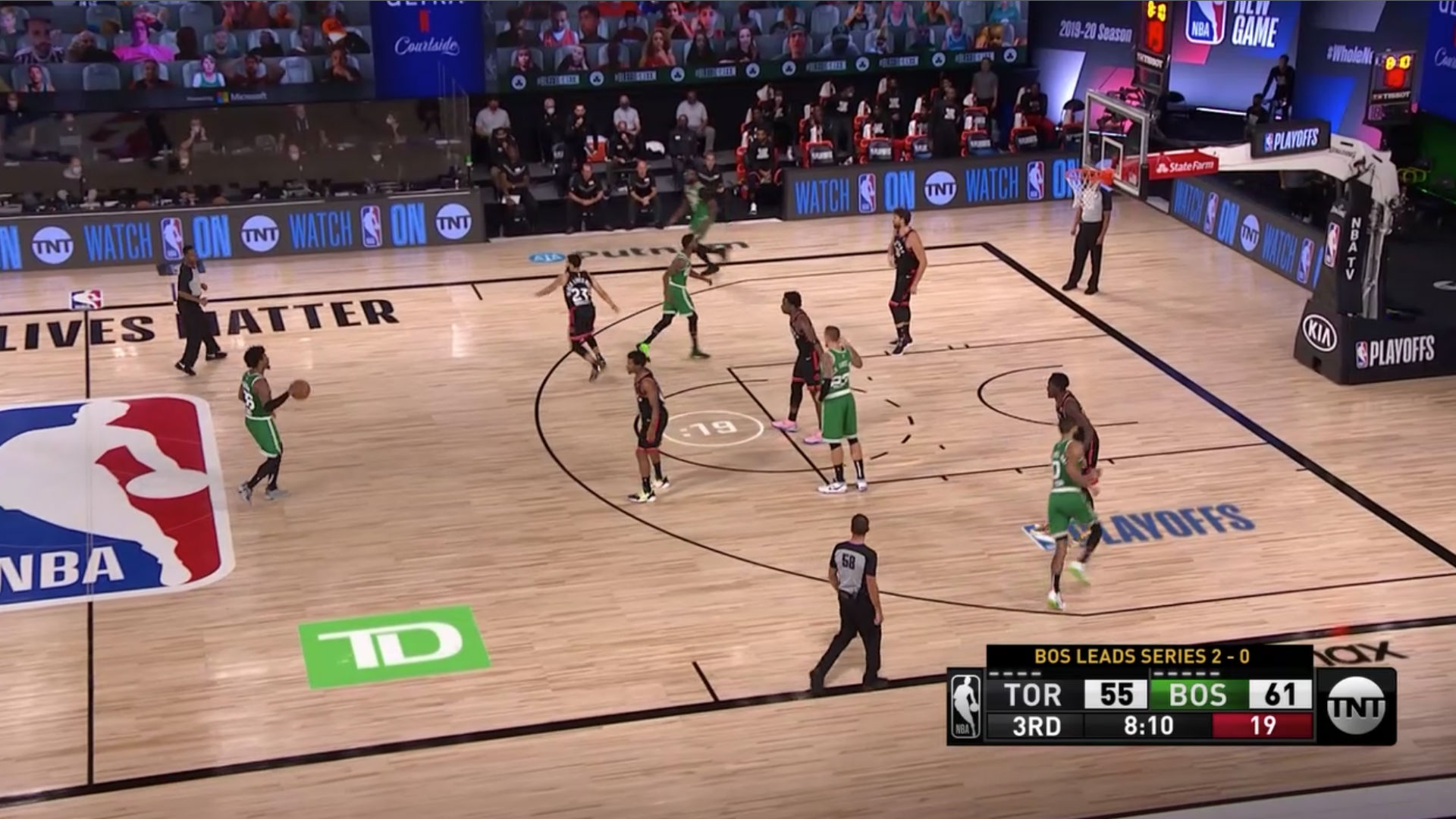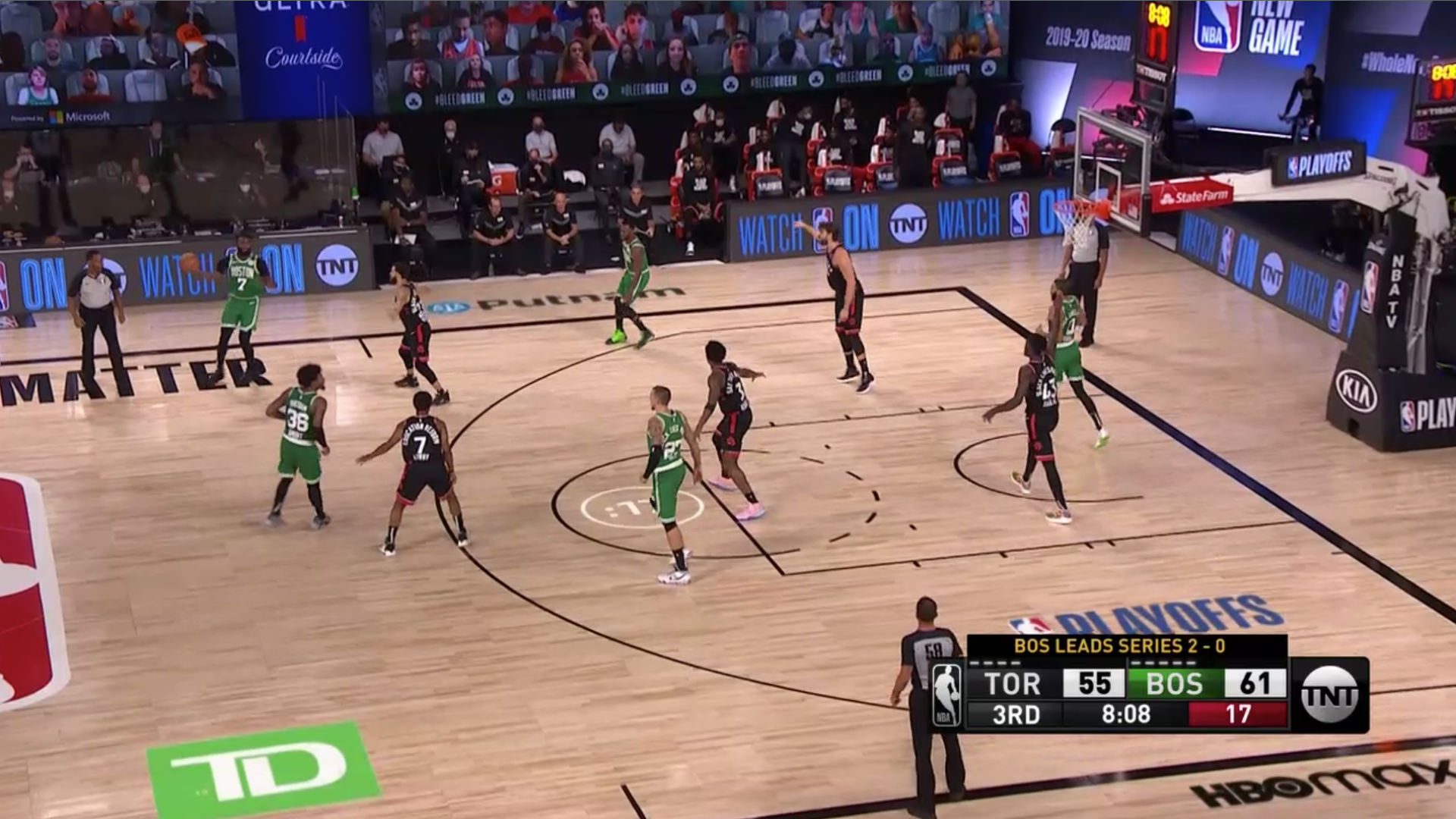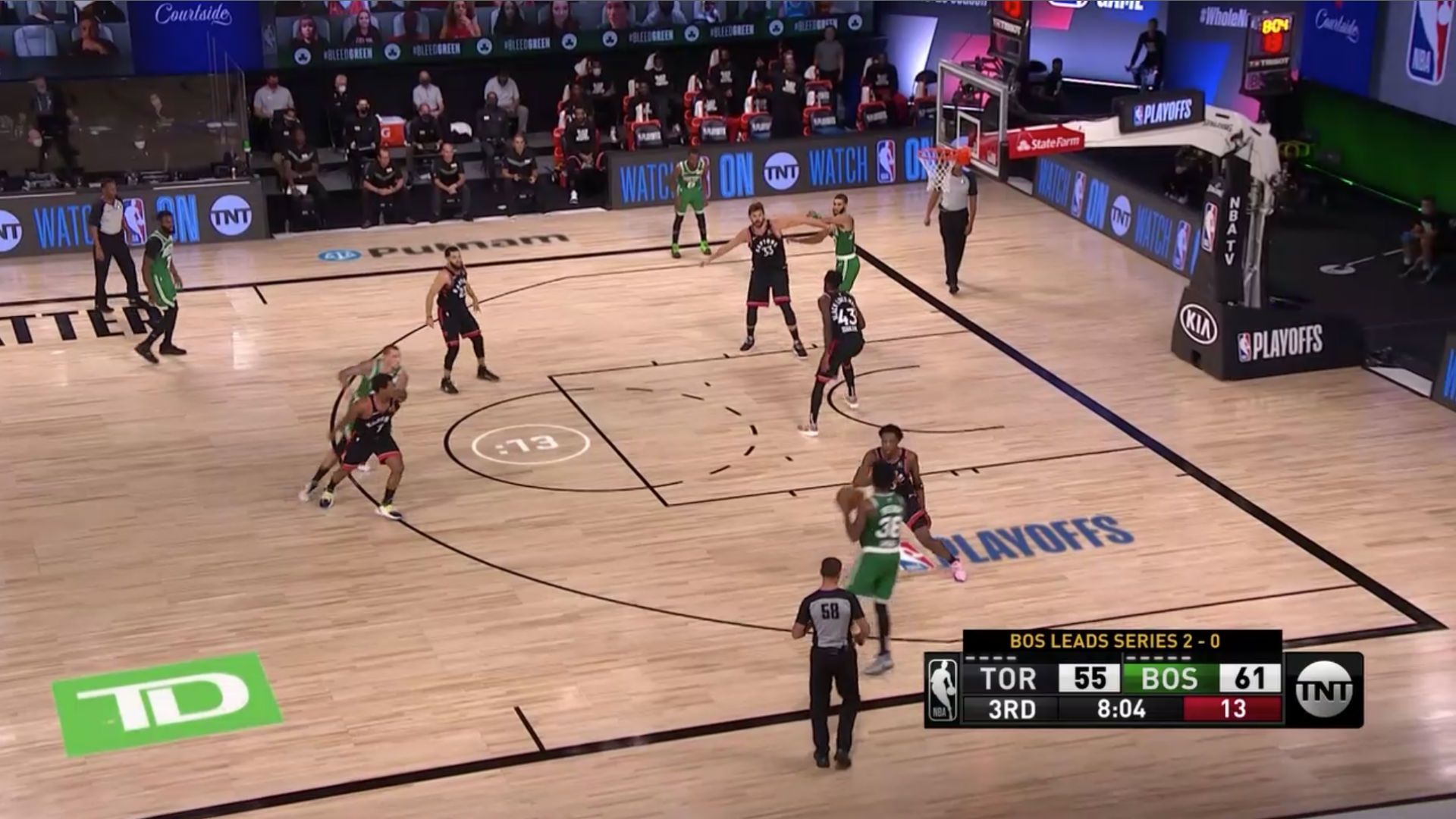"Stat Just Happened" is our new series where we'll pair an important stat with how it actually unfolded on the floor. Our aim? To answer key questions, uncover hidden truths and peel back the curtain on why some numbers matter more than others.
Today, the Toronto Raptors take the spotlight.
0.69
According to Gibson Pyper of Half Court Hoops, that's how many points per possession the Boston Celtics are averaging against Toronto's zone defence through three games of the Eastern Conference Semifinals.
Why is that noteworthy? It's an incredibly low figure.
For perspective, Cleaning The Glass had the Celtics averaging 0.97 points per halfcourt possession during the regular season, the 11th-best rate in the league. The New York Knicks had the least efficient halfcourt offence with an average of 0.89 points per possession.
To hold this Celtics team to a mark as low as 0.69 points per possession on anything is a huge victory for the Raptors.
Now, it's based on a relatively small sample size - Toronto has played a total of 40 zone possessions so far in this series, per Pyper, which isn't much - but it's because Raptors head coach Nick Nurse has used it strategically. The risk of going zone for long periods of time is that teams are likely to figure it out because zones are vulnerable to certain shots (3s, for the most part), as well as offensive rebounds. By mixing it in at different points in the game, the Raptors have a better shot at catching the Celtics off guard with it.
The longest the Raptors have played zone was in Game 3. They played primarily a 2-1-2 zone, meaning they had two players on the perimeter, one player at the free throw line and two players on the baseline, like so:

The Raptors then matched up accordingly, with each of them picking up the player that was closest to them.
On this particular possession, Kyle Lowry picked up Marcus Smart, Fred VanVleet picked up Jaylen Brown, Marc Gasol picked up Kemba Walker, Pascal Siakam picked up Jayson Tatum and OG Anunoby picked up Daniel Theis.

Those matchups changed slightly when the ball was reversed, with Walker switching onto Theis at the top of the perimeter and Anunoby switching onto Smart on the wing.

The end result? Smart gets past Anunoby but is met by two help defenders when he gets into the paint, leading to a heavily contested layup that he misses.
That's what makes the Raptors so difficult to score on when they play zone in a nutshell. As I wrote earlier in the season, I'm not sure there's a team that rotates better defensively than the Raptors. It shows up in a number of ways, but especially when they go zone because it puts them in scramble mode, forcing all five defenders to move on a string to avoid breakdowns.
This possession serves as even better example of how well the Raptors rotate out of the zone:
It's basically a game of helping the helper. VanVleet passes Walker onto Lowry, leaving Brown unguarded for a split-second. Anunoby and Siakam cover for Lowry when Brown puts the ball on the floor by walling off the paint, and Lowry immediately transitions into closing out on Tatum in the corner.
Had they matched up with the Celtics man-to-man, the Raptors would have been more susceptible to Walker walking into a 3-pointer following Theis' screen because they've been dropping both Gasol and Ibaka in pick-and-rolls. Walker has made a career out of picking drop coverages apart, something the Raptors have already learned the hard way several times in this series.
It helps, of course, that the Raptors have some of the most versatile defenders in the league. Lowry and VanVleet defend much bigger than their size, and Anunoby and Siakam are both more than capable of keeping guards in front of them. It makes them difficult to attack in isolation because there's rarely a clear mismatch that teams can exploit. Gasol and Ibaka are the weakest perimeter defenders in Toronto's rotation - hence why the Raptors have been dropping them in pick-and-rolls instead of switching or hedging - but it's easier to hide them in a zone than it is in man-to-man.
That's not to say there aren't ways Boston can beat Toronto's zone, because there are. Celtics head coach Brad Stevens went to Enes Kanter for the first time in the series in Game 3 because he's a far more competent scorer than Theis and Robert Williams. He's also one of the best offensive rebounders in the league, the combination of which makes him better-equipped to punish the Raptors in zone.
The problem is Kanter comes with a huge target on his back on the other end of the court. While he was able to score a couple of quick baskets when he checked into the game, he gave those points right back, with VanVleet and Lowry wasting no time putting him in a pick-and-roll.
He did answer a question about it. He said he put Kanter in because the Celtics couldn't score on the Raptors zone and thought Kanter would help would that. https://t.co/LRcsIm3tNl
- Keith Smith (@KeithSmithNBA) September 4, 2020
What does that mean for Game 4? Who knows. The Celtics will almost certainly be better prepared for Toronto's zone defence after the amount of trouble it gave them in Game 3, but will they have enough success against it to prevent the Raptors from using it even more?
As good as the Celtics have been offensively this season, if there's any reason to doubt them, it starts with that one key number...
0.69
The views on this page do not necessarily reflect the views of the NBA or its clubs.
https://news.google.com/__i/rss/rd/articles/CBMikwFodHRwczovL2NhLm5iYS5jb20vbmV3cy9zdGF0LWp1c3QtaGFwcGVuZWQtd2hlcmUtdGhlLXRvcm9udG8tcmFwdG9ycy1hcmUtcHJvdmluZy10by1iZS1hLW5pZ2h0bWFyZS1mb3ItdGhlLWJvc3Rvbi1jZWx0aWNzL2I2Z3AxamppZng3djF3a3M1emdhNmQzOHrSAZcBaHR0cHM6Ly9jYS5uYmEuY29tL2FtcC9uZXdzL3N0YXQtanVzdC1oYXBwZW5lZC13aGVyZS10aGUtdG9yb250by1yYXB0b3JzLWFyZS1wcm92aW5nLXRvLWJlLWEtbmlnaHRtYXJlLWZvci10aGUtYm9zdG9uLWNlbHRpY3MvYjZncDFqamlmeDd2MXdrczV6Z2E2ZDM4eg?oc=5
2020-09-05 11:50:00Z
52781023276381

Tidak ada komentar:
Posting Komentar